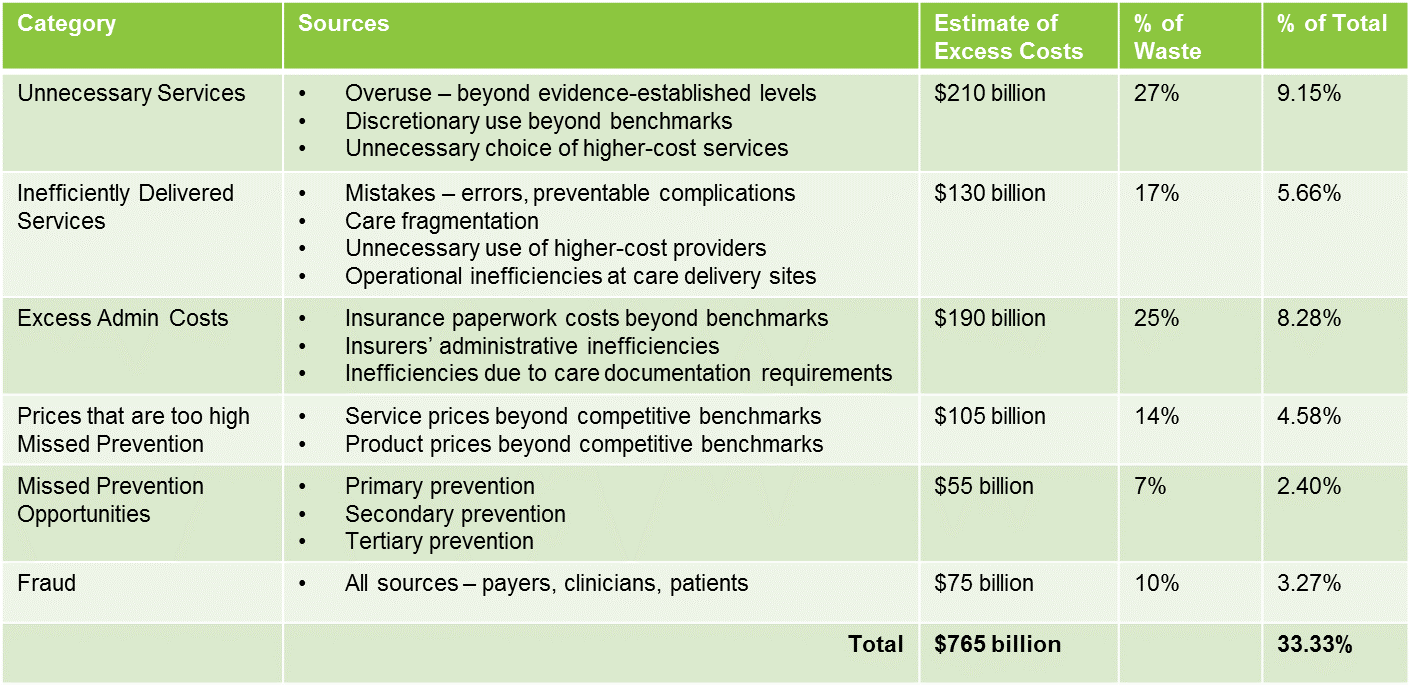 Eliminating inefficient and unnecessary medical services improves overall healthcare efficiency while reducing costs. In 2009, the Institute of Medicine (IOM) identified $750 billion of wasted spending with unnecessary services accounting for $210 billion. The U.S. Congressional Budget Office (CBO) has estimated that 30% of medical care in the United States is unnecessary care. Removing this waste and unnecessary care from the system will reduce costs, and is an opportunity to improve quality and patient safety.
Eliminating inefficient and unnecessary medical services improves overall healthcare efficiency while reducing costs. In 2009, the Institute of Medicine (IOM) identified $750 billion of wasted spending with unnecessary services accounting for $210 billion. The U.S. Congressional Budget Office (CBO) has estimated that 30% of medical care in the United States is unnecessary care. Removing this waste and unnecessary care from the system will reduce costs, and is an opportunity to improve quality and patient safety.
There are a number of use cases for analyzing health claims data to find wasteful and likely to be wasteful services.
- Quantify necessary vs. wasteful services
- Identify opportunities for cost savings
- Use provider profiling and pay for performance risk sharing reporting
- Use employer group reporting to convey the value of health plan services provided to employers
In a pilot study of wasteful services, Milliman looked at one health plan's claims data for Medicare and commercial over a one-year period (November 2012 to October 2013). Observations from that study found that 21% of members had at least one wasteful service, 25% of all services provides were wasteful, and 2.12% of the total claims cost allowed dollars were wasteful. Further data analysis found that 80% of the wasteful dollars came from only four measures:
- Stress cardiac imaging or advanced noninvasive imaging (58%, $8,568,369)
- Annual EKGs or cardiac screening (12%, $1,779,260)
- Lower back pain image (6%, $940,363)
- ED CT Scans for Dizziness (4%, $533,876)
To assist in the identification of wasteful services Milliman, along with VBID Health, has developed the MedInsight Waste Calculator. This analytical tool provides actionable data to support healthcare quality, efficiency, and effectiveness reporting. The calculator brings together clinical expertise and powerful data analytics--allowing healthcare managers to target and reduce wasteful spending.
This article first appeared at Milliman MedInsight.
